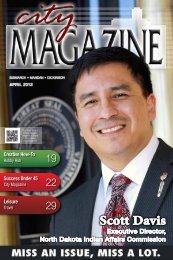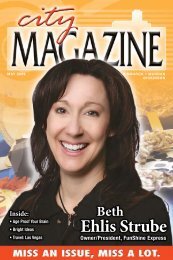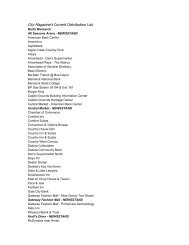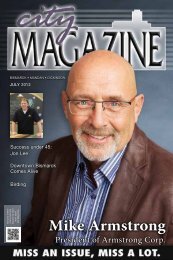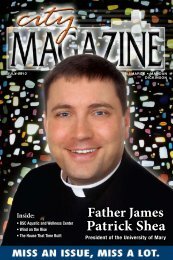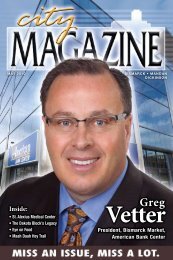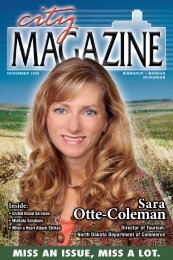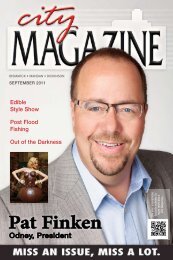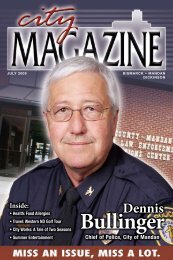Create successful ePaper yourself
Turn your PDF publications into a flip-book with our unique Google optimized e-Paper software.
one simple<br />
Little Click<br />
By Mike Wetsch<br />
When the discussion of seat belt usage<br />
arises, most of us have heard of<br />
someone who knows someone who<br />
was in a vehicle accident. The story sometimes<br />
continues with this “someone” being told they<br />
would have been severely injured or even killed<br />
had they been wearing their seat belts.<br />
The problem with the above comment is that<br />
it is difficult to verify the “someone” involved<br />
in the accident, and it is nearly impossible to<br />
determine the credentials of the individual who<br />
made the assessment that wearing a seat belt<br />
would have caused greater damage. With nearly<br />
40,000 accident fatalities each year, nearly half<br />
of these deaths can be avoided by wearing a seat<br />
belt.<br />
In N.D., all occupants between the ages of 7 and<br />
18 must wear, at a minimum, a seat belt no matter<br />
where they are located in the vehicle. Children<br />
under 7 must be in an appropriate car seat.<br />
Even though failing to wear a seat belt is a<br />
secondary offense in N. D., if an officer observes<br />
an individual who appears to be under the age of<br />
18, failing to wear a seat belt, the officer can stop<br />
the vehicle when no other offense is observed.<br />
The fine for failing to properly restrain a<br />
juvenile is $25. In the event that a seat belt<br />
violation is observed after a primary offense is<br />
observed, the fine for a front-seat adult violator<br />
is $20.<br />
SAFETY TIP |<br />
Seat belts provide impact protection, absorb<br />
crash forces and keep occupants from being<br />
thrown out of the vehicle. Vehicles are built with<br />
"crumple zones," and seat belts are an integral<br />
part of the system. Seat belts hold occupants<br />
in place while the vehicle collapses around the<br />
"safe" occupant zones.<br />
A main purpose of the seat belt is to keep<br />
occupants within the vehicle during a crash. You<br />
are 25 times more likely to be killed during a<br />
crash if ejected from the vehicle.<br />
Many people believe that seat belts will cause<br />
them to become stranded in the event of a<br />
vehicle fire, however, today’s manufacturing<br />
precautions make vehicle fires rare.<br />
The facts are in, and the evidence is overwhelming<br />
clear. There is no intelligent argument<br />
that can be made against seat belt usage.<br />
Mike Wetsch is a deputy with the Burleigh County<br />
Sheriff’s Department and is assigned to the patrol<br />
division.<br />
Safety Tip is sponsored by:<br />
September 2009 35



